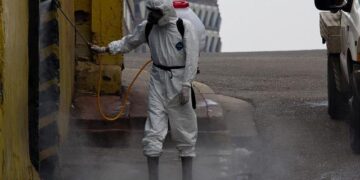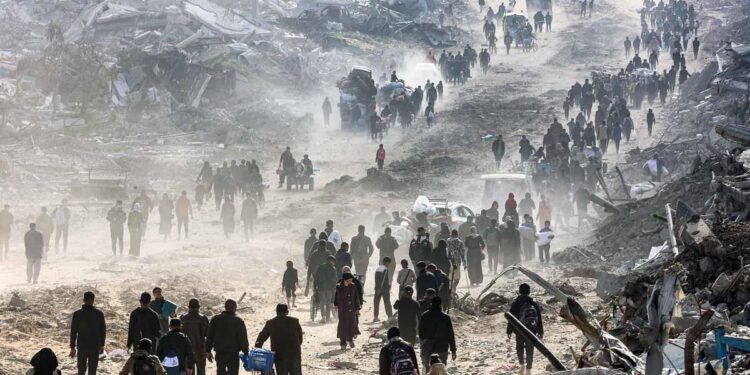Following the recent cease-fire agreement between Israel and Hamas, some pro-Palestinian protesters are taking a reflective look at their movement’s trajectory. As the immediate violence subsides, these activists express a mix of hope and regret, grappling with the challenges their cause has faced amid shifting political dynamics and public perception. This moment of pause offers a candid assessment of the protests that erupted during the conflict and raises questions about the future direction of the pro-Palestinian advocacy in a deeply polarized environment.
Pro-Palestinian Activists Reflect on Gains and Setbacks Amid Cease-Fire
As the recent cease-fire between Israel and Hamas brought a pause to weeks of violent conflict, pro-Palestinian activists find themselves at a crossroads. While many celebrated halting the immediate bloodshed, they also expressed frustration over missed opportunities to push their cause forward. Several voices within the movement acknowledge that despite widespread international attention and solidarity rallies across multiple continents, concrete political advances remain elusive. The cease-fire has spotlighted both the resilience of grassroots organizing and the challenges of sustaining momentum amid geopolitical complexities.
Activists frequently highlight a mix of achievements and setbacks:
- Increased global awareness: A surge in public demonstrations and media coverage illuminated Palestinian issues on a scale not seen in years.
- Policy pushbacks: However, many hoped-for policy shifts, especially in Western governments, have yet to materialize.
- Internal divisions: Disagreements on strategy and rhetoric have sometimes fractured unified representation.
- Social media dynamics: Online platforms were both a tool for fundraising and awareness but also a battleground for misinformation and censorship.
| Aspect | Gains | Setbacks |
|---|---|---|
| Public Support | Widespread demonstrations | Short-lived media attention |
| Political Impact | Increased debate in parliament | Lack of meaningful policy change |
| Movement Unity | Greater networking among groups | Ideological splits resurfaced |
| Digital Advocacy | Viral awareness campaigns | Censorship and misinformation challenges |
Challenges in Maintaining Momentum as Public Attention Shifts
As the cease-fire brought a tentative calm to the region, many activists found themselves grappling with a waning sense of urgency. The initial surge of energy that fueled mass protests and viral social media campaigns has been difficult to sustain, especially as global headlines pivot towards other crises. This shift poses a critical question for organizers: how to keep the movement visible and relevant in a crowded and rapidly evolving news cycle. Maintaining public engagement requires innovative strategies, yet the emotional toll and resource fatigue among key participants are palpable.
Internally, the movement faces challenges related to cohesion and message amplification. Efforts to balance immediate humanitarian concerns with long-term political goals often lead to friction, complicating coordinated action. Below is a snapshot of how different factors impact momentum:
| Challenge | Impact on Momentum |
|---|---|
| Media Attention Shift | Rapid decrease in public visibility |
| Protester Fatigue | Lower participation rates |
| Movement Fragmentation | Diluted collective messaging |
| Complex Political Landscape | Conflicting narratives and goals |
- Social media algorithms increasingly prioritize sensational stories, often sidelining ongoing advocacy.
- Resource scarcity limits sustained organizing efforts beyond initial waves of enthusiasm.
- Internal divisions regarding strategy and leadership raise concerns over movement unity.
Strategies for Reinvigorating the Movement and Building Broader Alliances
In the wake of the cease-fire, activists are reassessing their approach to advocacy, recognizing the need for more sustainable and inclusive strategies. Many emphasize the importance of intersectionality, building coalitions that extend beyond traditional pro-Palestinian circles to include broader social justice movements. This includes aligning with groups focused on racial equity, immigrant rights, and global human rights, thereby amplifying the message and engaging new demographics. Leaders stress that fostering empathy through storytelling and cultural exchange can help counter widespread misinformation and polarization.
The revitalization efforts rest on several key pillars:
- Grassroots engagement: Encouraging local communities to participate actively rather than relying solely on large-scale demonstrations.
- Educational initiatives: Developing accessible materials that clarify the historical and geopolitical complexities of the conflict.
- Digital activism: Leveraging social media platforms for targeted campaigns while combating online harassment.
- Policy advocacy: Pursuing concrete legislative goals that address humanitarian concerns and promote diplomatic solutions.
| Strategy | Expected Impact |
|---|---|
| Intersectional Alliances | Broader support base |
| Local Organizing | Stronger community ties |
| Educational Campaigns | Informed public discourse |
| Policy Lobbying | Concrete legislative change |
Final Thoughts
As the cease-fire between Israel and Hamas takes hold, the pro-Palestinian movement finds itself at a reflective crossroads. While many activists remain steadfast in their calls for justice and an end to occupation, others express a sobering reassessment of the movement’s trajectory and impact amid ongoing conflict and political complexities. This moment of introspection underscores the enduring challenges faced by advocates seeking lasting peace and highlights the evolving dynamics within a movement shaped by decades of struggle.






























